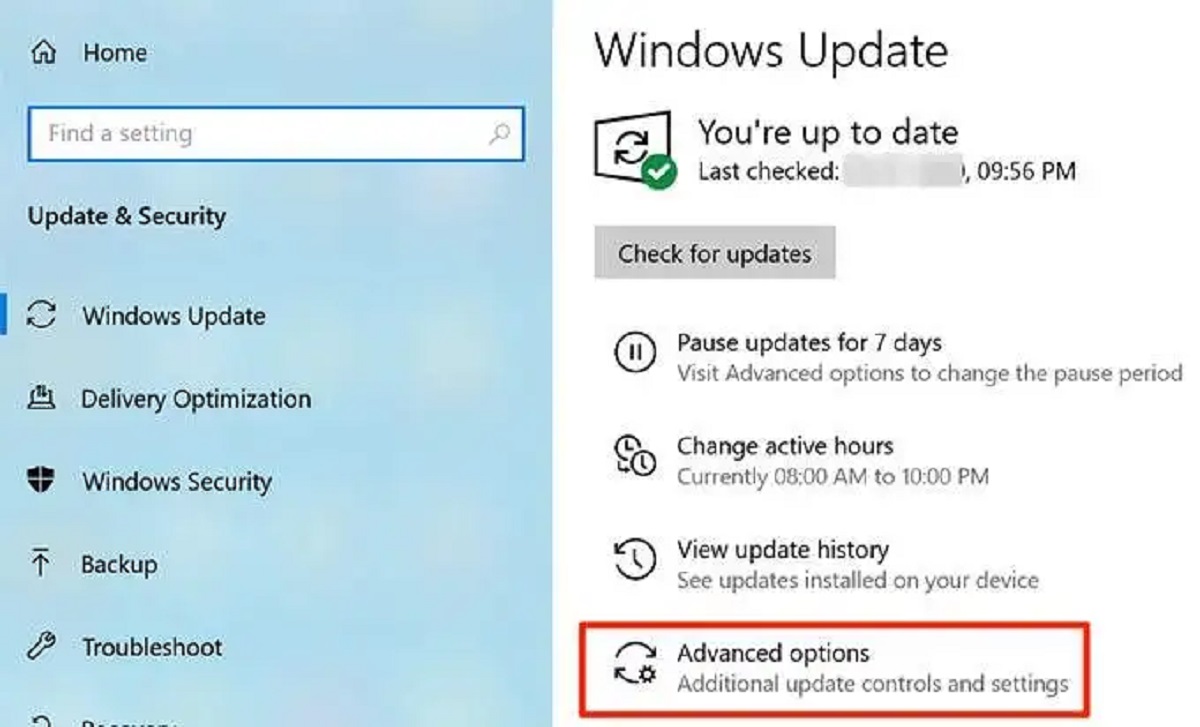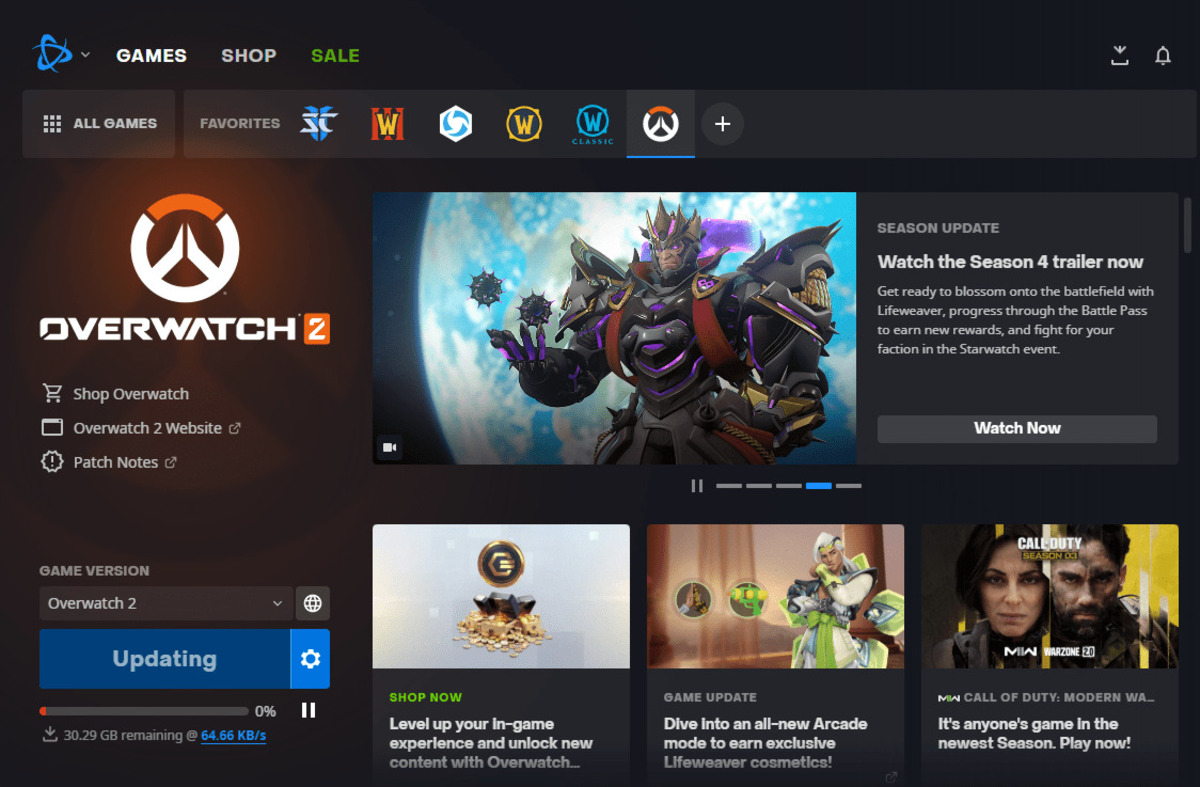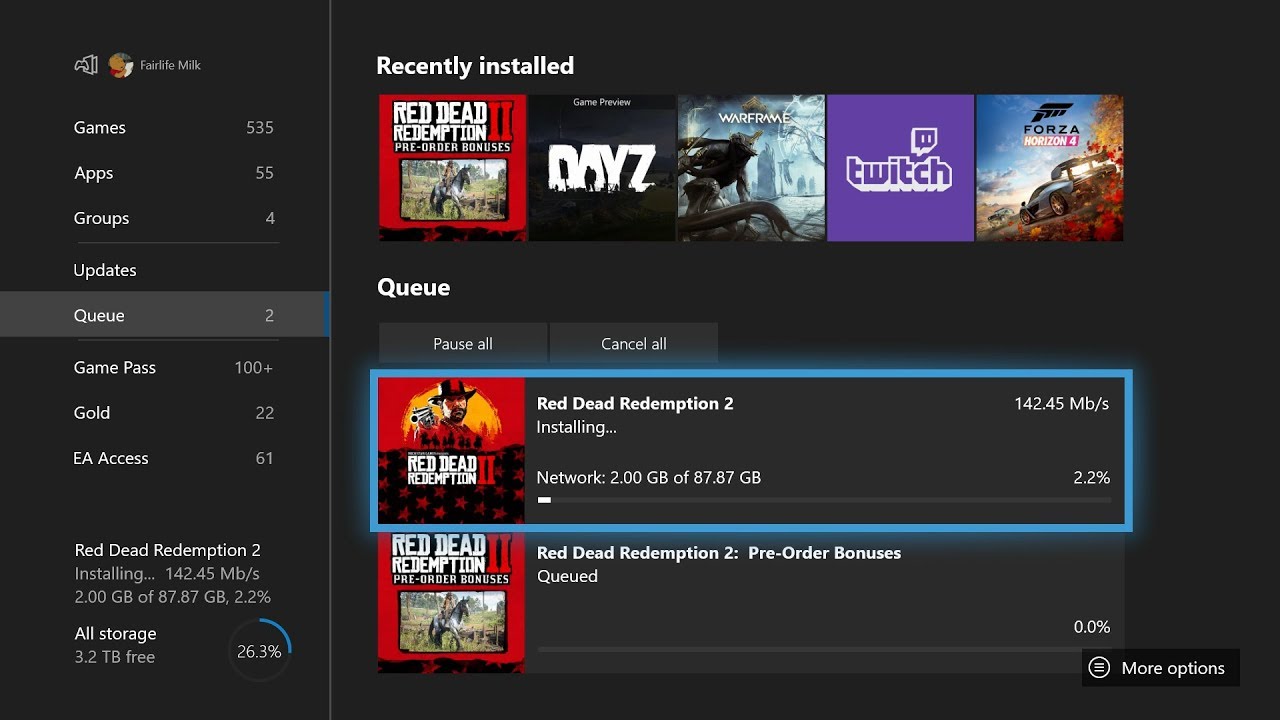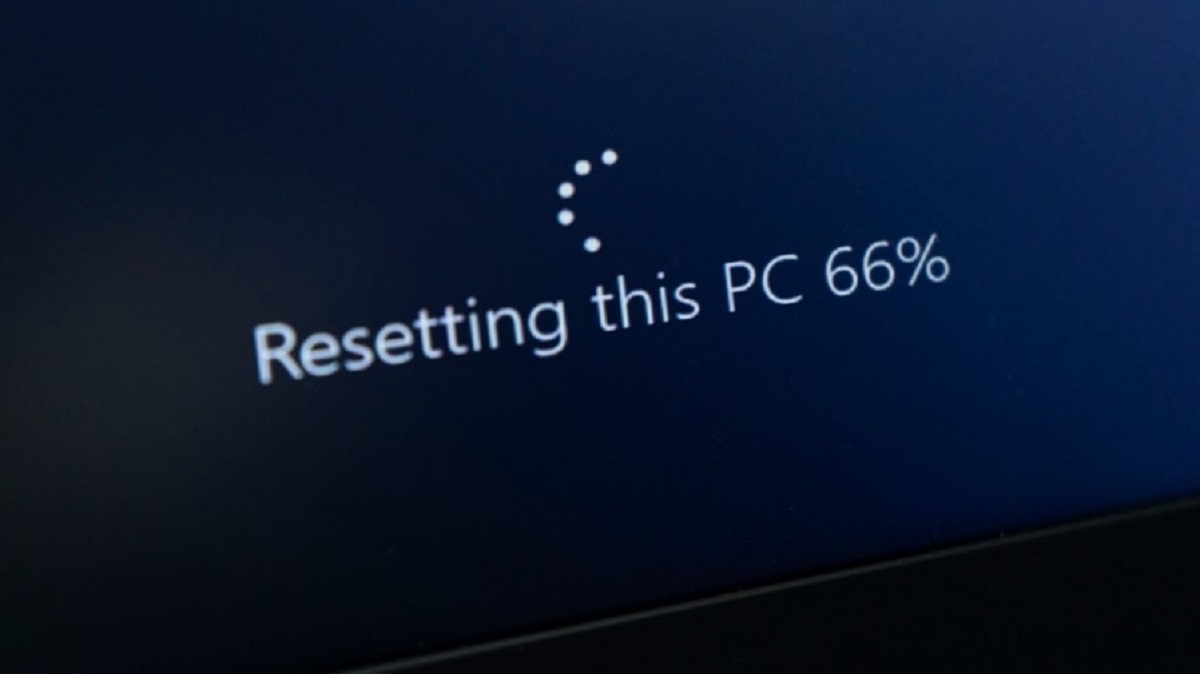Introduction
When it comes to downloading files on your PC, speed is of the essence. Slow download speeds can be frustrating, especially when you are trying to access important documents, large software files, or entertaining media. Fortunately, there are several methods you can employ to make downloads faster on your PC. In this article, we will explore various techniques to optimize your download speeds and improve your overall downloading experience.
From updating your device drivers to utilizing download managers, we will cover a range of options that can significantly enhance your download speeds. Whether you are using your PC for work, gaming, or streaming, these tips will help you maximize your bandwidth and reduce the time it takes to download files.
By following these strategies, you can ensure that your downloads are completed more efficiently, allowing you to focus on what matters most to you. So let’s dive into the details and find out how you can make downloads faster on your PC.
Update the Device Drivers
Outdated device drivers can often cause slow download speeds on your PC. Device drivers act as the communication bridge between your hardware and software, and outdated drivers can result in poor performance. To ensure that your PC is running at its optimal speed, it is important to regularly update your device drivers.
You can update your device drivers manually by visiting the manufacturer’s website and downloading the latest drivers for your specific hardware. This can be a time-consuming process, especially if you have multiple devices that require updates.
An alternative method is to use driver update software that scans your PC, identifies outdated drivers, and automatically installs the latest versions. These software tools can save you time and effort, as they streamline the driver update process.
By updating your device drivers, you can take advantage of performance improvements and bug fixes implemented by the manufacturers. This can result in better download speeds and overall system stability.
It is recommended to update your device drivers regularly, especially after major system updates or when you experience issues with your download speeds. Keeping your drivers up to date ensures that your PC is equipped with the latest optimizations and compatibility enhancements.
To summarize, updating your device drivers is a crucial step in improving your download speeds on your PC. Whether you choose to update them manually or use driver update software, ensuring that your drivers are up to date can significantly boost your download performance.
Disable Unnecessary Applications and Processes
When you have multiple applications and processes running in the background of your PC, it can consume valuable system resources and impact your download speeds. To optimize your download experience, it is crucial to identify and disable any unnecessary applications and processes.
Start by closing any idle applications or programs that you are not using. These applications may be consuming system resources and bandwidth, thereby slowing down your download speed. It is also a good practice to disable any startup applications that you don’t need running in the background every time you start your PC.
In addition to closing applications, you should also check for unnecessary processes running in the background. Open the Task Manager by pressing Ctrl + Shift + Esc and navigate to the Processes tab. Look for any processes that are using a significant amount of CPU or network resources.
If you identify any processes that are not essential for your PC’s functioning, you can right-click on them and select “End Task” to terminate them. However, exercise caution and only close processes that you are familiar with, as terminating critical system processes can cause instability.
By disabling unnecessary applications and terminating resource-heavy processes, you can free up system resources and allocate them towards your download. This can result in faster download speeds and improved overall system performance.
It is worth noting that some applications may run background processes that are essential for their proper functioning. Therefore, it is recommended to research the purpose of a process before terminating it to avoid any unintended consequences.
To summarize, disabling unnecessary applications and processes can greatly improve your download speeds on your PC. By freeing up system resources, you can allocate more bandwidth towards your downloads, ensuring a faster and more efficient downloading experience.
Use a Wired Connection Instead of Wi-Fi
One of the most effective ways to ensure faster download speeds on your PC is to use a wired connection instead of relying on Wi-Fi. While Wi-Fi offers convenience and mobility, it can be susceptible to interference and signal degradation, which can impact your download speeds.
When you connect your PC directly to the router or modem using an Ethernet cable, you can eliminate potential wireless connectivity issues and experience a more stable and consistent internet connection. With a wired connection, you can maximize the available bandwidth and reduce latency, resulting in faster download speeds.
Moreover, wired connections can provide a more secure and reliable connection, especially when dealing with large file downloads or online gaming. You won’t have to worry about signal strength fluctuations or interference from other devices that can hinder your download speeds.
If you are unable to connect your PC directly to the router due to physical limitations or other reasons, consider using a powerline adapter. A powerline adapter uses your existing electrical wiring to transmit internet signals, allowing you to establish a wired-like connection in any room of your house.
It’s important to note that if you choose to use a wired connection, ensure that your Ethernet cable is in good condition and of high quality. Faulty or cheap cables can hinder your download speeds and negate the benefits of a wired connection.
In summary, using a wired connection instead of Wi-Fi can significantly improve your download speeds on your PC. By directly connecting to your router or using a powerline adapter, you can enjoy a more stable and reliable internet connection, resulting in faster and more efficient downloads.
Clear Your Browser Cache and Cookies
Clearing your browser cache and cookies is a simple yet effective way to improve download speeds on your PC. Over time, your browser stores temporary files, images, and other data to speed up your browsing experience. However, this cache can become bloated and outdated, leading to slower download speeds.
When you clear your browser cache and cookies, you remove these stored files, allowing your browser to download fresh data without any unnecessary baggage. This can result in faster and more efficient downloads, as your browser doesn’t have to sift through outdated or redundant files.
Clearing your cache and cookies can also resolve issues related to website compatibility and functionality. Sometimes, cached files can cause conflicts and prevent certain websites from loading correctly, which can impact your ability to download files from those sites.
To clear your cache and cookies, access the settings or preferences menu of your browser. Look for options related to browsing or privacy settings, where you should find the option to clear your cache and cookies. Depending on the browser you are using, the specific location and wording may vary slightly.
Once you have cleared your browser cache and cookies, restart your browser and navigate to the website from where you want to download files. You should notice a boost in download speed as your browser fetches fresh data without any cached hindrances.
It is worth mentioning that clearing your cache and cookies will also sign you out of any logged-in accounts, and you may lose saved settings or preferences on certain websites. Therefore, it is recommended to carefully consider the implications before clearing your cache and cookies.
In summary, clearing your browser cache and cookies can enhance download speeds on your PC by removing outdated and unnecessary files. By incorporating this simple maintenance task into your routine, you can enjoy faster and more efficient downloads on your browser.
Adjust the Download Settings
Adjusting the download settings on your PC can have a significant impact on your download speeds. By optimizing these settings, you can ensure that your downloads are prioritized and utilize your available bandwidth to its fullest extent.
One of the key settings to consider is the maximum download speed limit. Some software or download managers may have a default limit set, which can hinder your download speeds. Take the time to check the settings of your download manager or software to see if there is a maximum speed limit that can be adjusted. Increase the limit to match your available internet bandwidth to maximize your download speed.
Another important setting to consider is the number of concurrent downloads. This refers to the number of files you can download simultaneously. If you have a high-speed internet connection, increasing the number of simultaneous downloads can help distribute the bandwidth across multiple files, resulting in faster overall download speeds. However, it is important to find the right balance, as too many concurrent downloads can overload your internet connection and decrease speeds.
Additionally, consider the location of your download server. If you have the option to choose a download server from multiple locations, select the server that is geographically closest to you. This can reduce network latency and result in faster download speeds, as data will have to travel a shorter distance.
Lastly, consider the file fragmentation setting. Some download managers have the option to split files into smaller fragments and download them simultaneously. This can improve download speeds, especially for large files, as it allows for parallel downloading. Check if your download manager offers this feature and enable it if possible.
It’s important to note that not all download managers or software offer the same settings, so explore the options available to you and adjust them accordingly. Experimenting with different settings and monitoring the impact on your download speeds can help you find the ideal configuration for your specific setup.
In summary, adjusting the download settings on your PC can optimize your downloads and result in faster speeds. By fine-tuning settings such as the maximum download speed limit, number of concurrent downloads, server location, and file fragmentation, you can make the most of your internet connection and enjoy quicker and more efficient downloads.
Utilize a Download Manager
Using a dedicated download manager can greatly enhance your download speeds on your PC. A download manager is a software application designed specifically for downloading files from the internet. It offers a range of features and optimizations that can improve your downloading experience.
One of the primary benefits of a download manager is its ability to resume interrupted downloads. If you experience a network interruption or your internet connection drops while downloading a file, a download manager can pick up where it left off once the connection is restored. This saves you time and bandwidth by eliminating the need to start the download from scratch.
Furthermore, download managers often utilize multiple connections to download a file, which can result in faster download speeds. By splitting the file into smaller parts and downloading them simultaneously, a download manager takes advantage of your available bandwidth and maximizes your download speed.
Another useful feature of download managers is the ability to schedule downloads. If you have a large file to download but don’t want it to consume all your bandwidth during peak hours, you can schedule the download to start at a specific time when network usage is low. This ensures that your download is not affected by other activities on your network.
In addition to these features, many download managers offer advanced capabilities such as download prioritization, bandwidth allocation, and automatic file organization. These features allow you to manage and optimize your downloads based on your preferences and requirements.
When selecting a download manager, consider factors such as user interface, support for different protocols, integration with web browsers, and overall performance. There are numerous download manager options available, both free and paid, so explore the features and choose the one that best suits your needs.
In summary, utilizing a download manager can significantly improve your download speeds on your PC. With features like resume capability, multi-connection downloads, and scheduling options, a download manager can enhance your downloading experience and make it faster and more efficient.
Scan Your Computer for Malware
Malware infections on your PC can not only compromise your security but also impact your download speeds. Malicious software often runs in the background, consuming system resources and slowing down your computer’s performance. By scanning your computer for malware, you can identify and remove any potential threats that may be affecting your download speeds.
There are several effective antimalware tools available that can help detect and remove malware from your system. It is recommended to use a reliable and reputable antivirus software to perform a full system scan. Ensure that your antivirus software is regularly updated to detect the latest threats and protect your PC.
During the scan, the antivirus software will examine all files and processes on your computer and identify any suspicious or infected items. If any malware is found, follow the recommended actions provided by the antivirus software to quarantine or remove the malicious files. This will help clean your system and improve its overall performance.
It’s important to note that prevention is key when it comes to malware. To minimize the risk of malware infections, make sure to follow safe browsing practices, avoid downloading files from untrusted sources, and be cautious when opening email attachments or clicking on unfamiliar links.
Regularly scanning your computer for malware is a crucial step in maintaining a healthy system and optimizing your download speeds. By ensuring that your PC is free from malware, you can maximize your bandwidth and experience faster and more secure downloads.
Disable Automatic Updates
Automatic updates are a common feature in operating systems and software applications, but they can have an impact on your download speeds. When your PC is downloading and installing updates in the background, it consumes valuable bandwidth and can slow down your download speeds for other files.
If you are experiencing slow download speeds, it may be worth considering disabling automatic updates temporarily to prioritize your current downloads. This allows you to allocate your available bandwidth solely to the files you are actively downloading, resulting in faster speeds.
Keep in mind that disabling automatic updates means you will need to manually check for and install updates, which could potentially leave your system vulnerable to security exploits. It is important to weigh the pros and cons of disabling automatic updates and ensure that you have alternative security measures in place.
Here are steps to disable automatic updates in some commonly used operating systems:
Windows: Go to the Control Panel, then open the Windows Update settings. You can choose to either completely disable automatic updates or modify the settings to download and install updates at a time when they won’t interfere with your downloads.
macOS: On macOS, you can disable automatic updates by going to the System Preferences, clicking on the App Store, and unchecking the box next to “Download newly available updates in the background.”
Linux: The process to disable automatic updates on Linux varies depending on the distribution. Generally, you can achieve this by modifying the update settings in the package manager or using a command line tool.
Disabling automatic updates should be done with caution and temporarily, especially when it comes to security updates. It is recommended to re-enable automatic updates once you have completed your downloads to ensure that your system stays up to date and protected.
In summary, disabling automatic updates on your PC can free up bandwidth and improve download speeds. However, it is important to assess the potential impact on security and consider alternative security measures to mitigate any risks associated with disabling automatic updates.
Remove Unnecessary Temporary Files
Temporary files are created and stored on your PC during various activities, such as browsing the internet, installing software, or running applications. Over time, these temporary files can accumulate and take up valuable disk space, potentially slowing down your system and affecting download speeds. Removing unnecessary temporary files is a simple yet effective way to optimize your PC and improve your download performance.
There are several methods you can use to remove temporary files on your PC:
1. Disk Cleanup: Most operating systems have built-in disk cleanup tools that help you identify and remove unnecessary files. These tools typically target temporary files, system logs, and other types of clutter that can be safely deleted. Take advantage of these tools to regularly free up disk space and optimize your PC.
2. Temporary File Cleaners: There are third-party software applications available that specialize in removing temporary files and other junk files from your PC. These tools often offer more advanced cleaning options and can provide a more comprehensive clean-up compared to built-in disk cleanup tools. Research and choose a reputable temporary file cleaner that suits your needs.
3. Manual Deletion: For more advanced users, you can manually locate and delete temporary files. Temporary files are typically stored in specific directories, such as the “Temp” folder or the cache folders of web browsers. However, exercise caution when manually deleting files, as deleting the wrong files can potentially harm your system and its functionality.
Regularly removing temporary files not only improves system performance but also frees up disk space, allowing for smoother download operations. By eliminating clutter and optimizing your PC, you can maximize your download speeds and ensure a more efficient computing experience.
It is recommended to perform temporary file cleanups on a regular basis to maintain an optimized system. Consider setting reminders or scheduling automatic cleanups to avoid the accumulation of unnecessary files over time.
In summary, removing unnecessary temporary files is a simple and effective way to improve download speeds on your PC. Utilize built-in tools, third-party software, or manual deletion methods to regularly clean up your system and optimize performance.
Conclusion
By implementing the strategies outlined in this article, you can significantly improve the download speeds on your PC. Updating your device drivers ensures that your hardware is optimized for performance, while disabling unnecessary applications and processes frees up system resources. Using a wired connection instead of Wi-Fi eliminates potential signal interference, and clearing your browser cache and cookies removes any outdated data that may hinder download speeds.
Adjusting download settings, such as maximum speed limits, number of concurrent downloads, and server locations, allows you to optimize your bandwidth allocation. Utilizing a download manager enhances download speeds through features like resume capability and parallel downloading. Scanning your computer for malware helps maintain system performance and protect against potential threats. Finally, removing unnecessary temporary files frees up disk space and ensures smoother download operations.
Remember that every PC setup is unique, and not all strategies may apply to your specific situation. It is recommended to experiment with these techniques and find the combination that works best for you.
Optimizing download speeds is an ongoing process that requires regular maintenance and updates. By staying proactive and following these tips, you can ensure that your downloads are completed more efficiently, saving you time and frustration in the long run.
So, start implementing these strategies today and experience faster and more seamless downloads on your PC. Whether you need to download large files for work or enjoy your favorite media content, these optimizations will enhance your overall downloading experience.

























